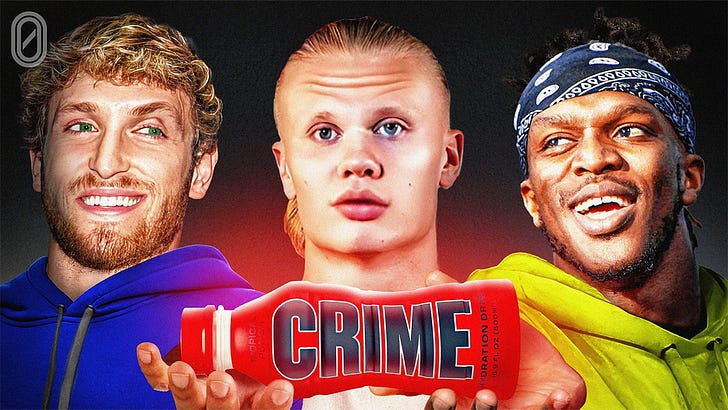When Hype Bubbles Burst: From PRIME Hydration to Amazon Prime Day
A Cautionary Tale About Overplaying the Hype Hand
Hype can drive growth but only up to a point.
PRIME Hydration and Amazon’s Prime Day are two case studies of what happens when excitement and marketing theatrics outpace product value and consumer trust.
Despite their different origins, one influencer-led beverage and the other an invented retail holiday, they share a similar arc: fast growth, consumer obsession, and eventual pushback once the novelty wears off.
PRIME Hydration: Viral Demand Without Lasting Loyalty
Launched in early 2022, PRIME Hydration exploded thanks to Logan Paul and KSI’s massive online audiences. The product saw:
High initial demand, especially in the UK, where black-market resales and in-store fights became headline news (Gymfluencers).
Major partnerships with Manchester City and UFC gave the brand a veneer of legitimacy (Gymfluencers).
Revenue collapse: UK sales dropped ~70% from £112M (2023) to £33M (2024). Profit dropped 92% year-over-year (Business Insider, Gymfluencers).
In the U.S., sales fell ~40% in early 2024 compared to the prior year (Business Insider).
PRIME’s product, a flavored sports drink, wasn’t materially different from competitors. Once it became widely available and lost its novelty, many customers didn’t stick around.
Lawsuits followed, including one from a bottling partner citing “fading social media buzz” and oversupply (Gymfluencers). This points to a company that mistook viral momentum for stable demand, then overproduced and overpromised.
Key Insight: When the driver of value is celebrity hype, not product benefit, repeat purchasing suffers. As one analyst warned, “there’s a big risk this turns into a short-term viral fad unless the product itself serves a real consumer need” (Business Insider).
Amazon Prime Day: From Anticipation to Apathy
Prime Day began in 2015 as a 24-hour shopping event that quickly became Amazon’s biggest revenue day. But the trajectory since 2022 shows a cooling trend:
Revenue plateaued: After jumping 62.8% in 2022 to $11.9B, growth slowed to 6.7% in 2023, and 11.8% in 2024. Still up—but losing momentum (enjoy-aiia.com, san.com).
In 2025, Amazon extended Prime Day to four days, but sales declined 14% in the first four hours vs. 2024 (PYMNTS.com).
Shoppers reported feeling overwhelmed, with many saying it no longer felt special, just “another sale” stretched thin.
More damaging than fatigue was the loss of trust. Investigations revealed that Amazon (and sellers) inflated list prices pre-sale, then offered “discounts” off those inflated prices—creating the illusion of deals (Popular.info, Fast Company). This is not just misleading; in some states (like New Jersey), it's illegal to advertise discounts on prices never actually charged (NatLawReview.com).
Tools like CamelCamelCamel and Keepa made these price patterns visible to shoppers. In 2024:
54% of Prime Day shoppers checked the price history or competitors before making a purchase (Capital One Shopping).
Impulse purchases dropped to just 9%—a massive drop from the event’s earlier years (Capital One Shopping).
Key Insight: Consumers caught on to pricing manipulation and responded with skepticism, not loyalty.
What Connects PRIME and Prime Day?
Though very different in category, both followed a hype-driven model that ran aground. The shared themes:
Scarcity and urgency tactics: PRIME relied on artificial scarcity to drive up value. Prime Day utilized countdown timers and limited-stock warnings to drive impulse purchases. These tactics eventually wore thin as customers caught on to the gimmicks.
Erosion of trust: PRIME’s product didn’t live up to the influencer-fueled hype, and lawsuits from vendors exposed deeper cracks. Amazon’s price manipulation tactics have become increasingly transparent, drawing criticism across various platforms.
Overextension: PRIME scaled too fast, projecting continued viral demand that didn’t last. Amazon extended Prime Day to four days, weakening its special-event aura and prompting shoppers to consider competitors.
A more informed consumer base: Shoppers in 2024-2025 are utilizing Reddit, TikTok, and browser tools to compare, track, and verify products. They’re no longer buying the first flashy offer they see. And when they sense they’ve been played, they disengage.
What This Means Going Forward
Modern consumers will give you a chance, but they won’t stay loyal to a product that doesn’t hold up under scrutiny. They won’t blindly click “Buy Now” when they know how to fact-check you in three taps.
Both PRIME and Prime Day show that you can’t market your way out of weak product value or eroded trust. Hype can serve as a launchpad, but it's not a sustainable long-term business model. Today’s brands need:
Clear value beyond the buzz
Pricing that makes sense without tricks
A long-term reason for consumers to come back
As one marketer put it: “You can’t cheat the fundamentals” (MarketingWeek.com). At some point, the product has to earn the customer—because hype alone won’t.



